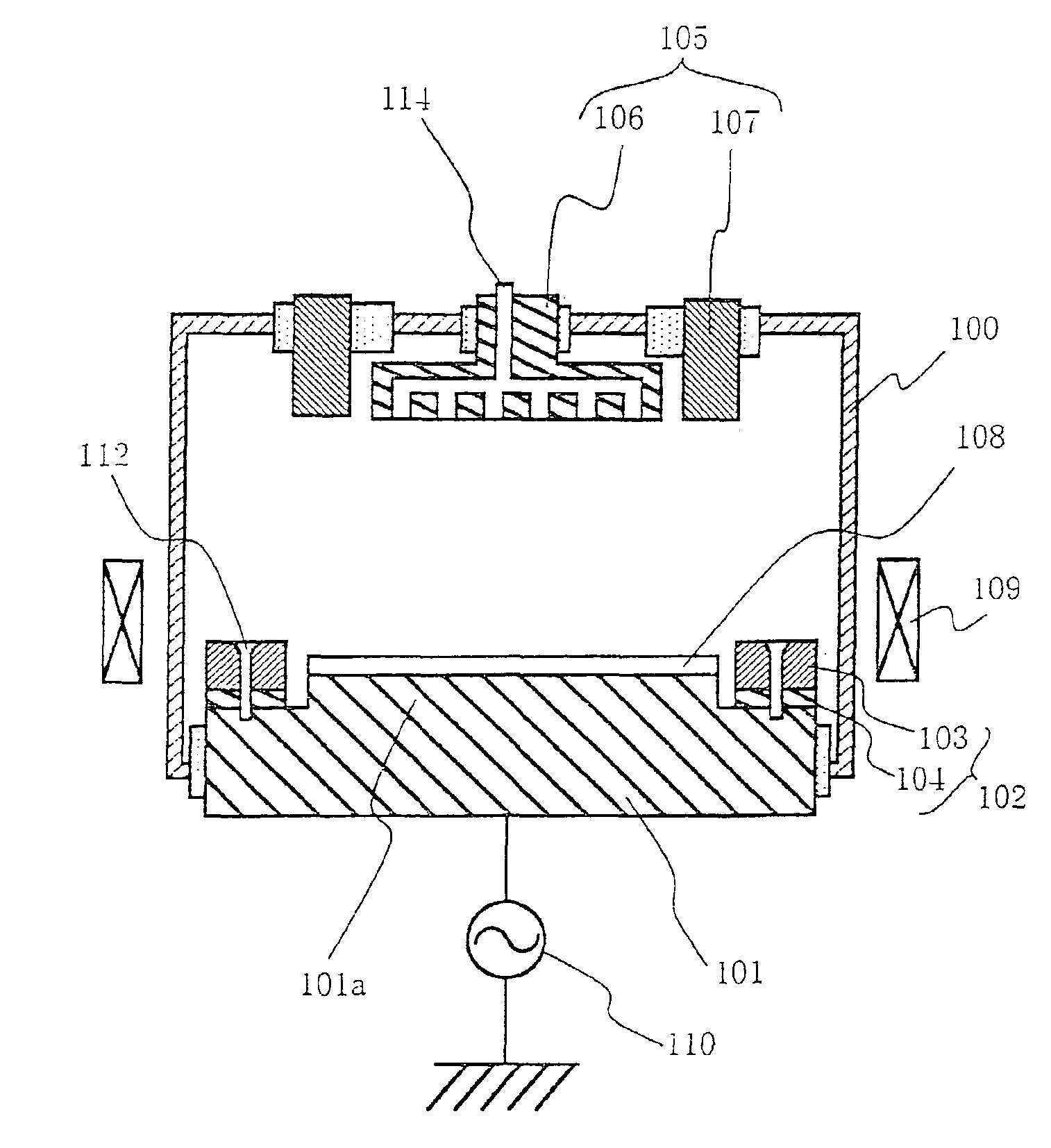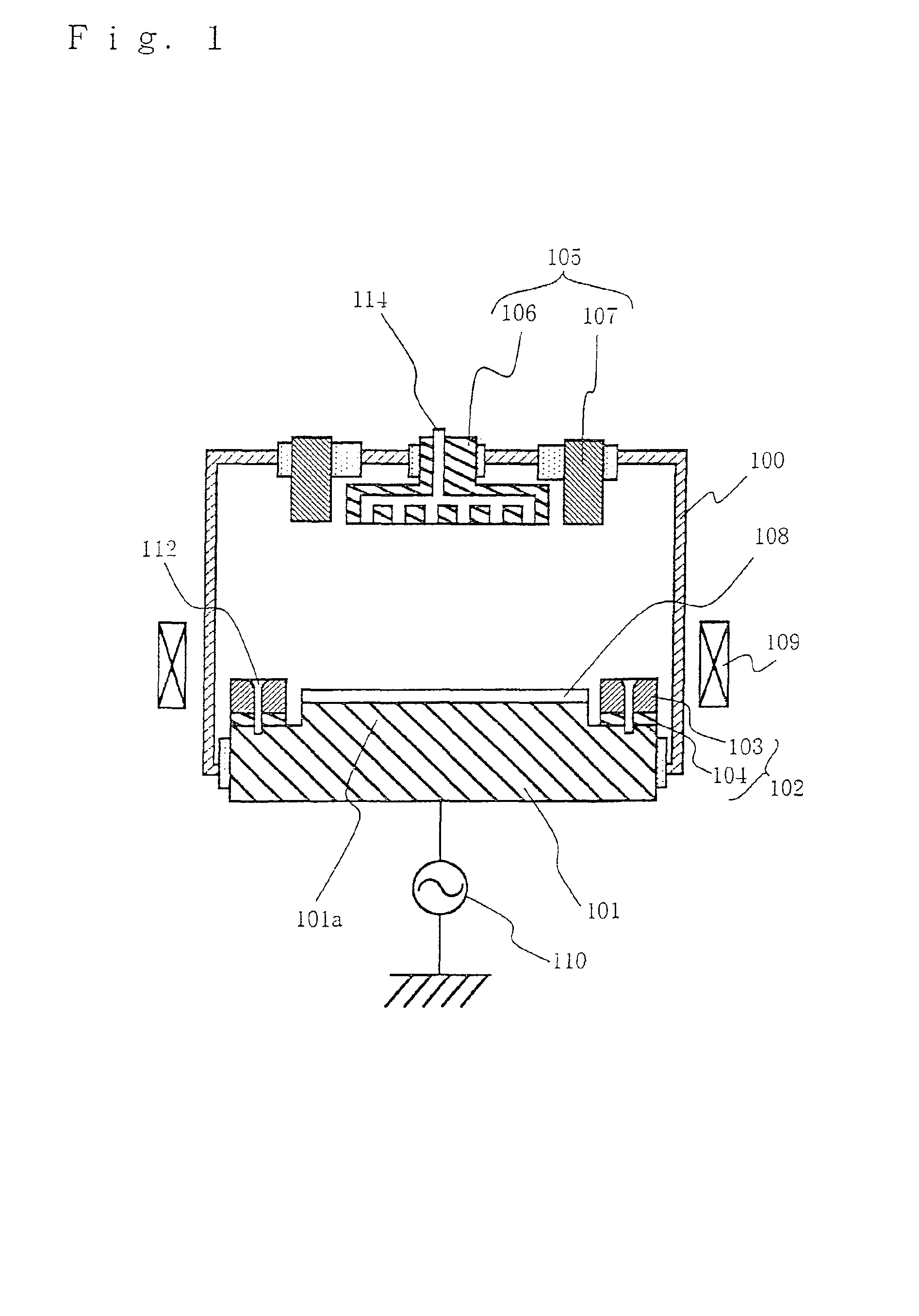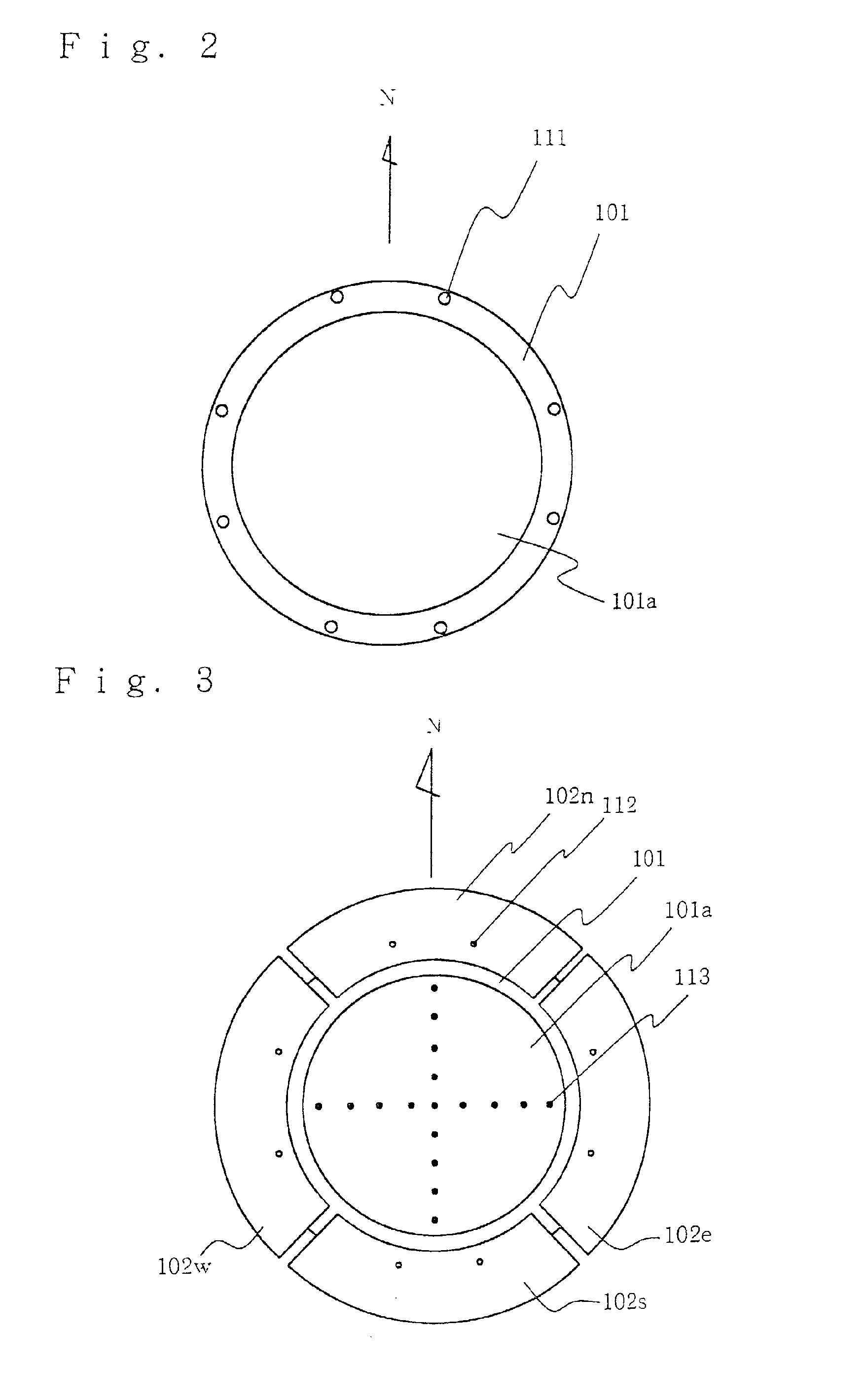Plasma etching device
a technology of etching device and plasma, which is applied in the direction of coating, chemical vapor deposition coating, electric discharge tube, etc., can solve the problems of difficult plasma generation on the base with high precision, and inability to achieve plasma performan
- Summary
- Abstract
- Description
- Claims
- Application Information
AI Technical Summary
Benefits of technology
Problems solved by technology
Method used
Image
Examples
embodiment 1
[0117]In this embodiment, a parallel plate type plasma etching device provided with the auxiliary electrode shown in FIG. 1 is used, the plasma density distribution of plasma generated when a high frequency (13.56 [MHz]) is applied to electrode I is investigated with different methods of installing the auxiliary electrode.
[0118]The auxiliary electrode 102 is used being divided into four parts, each part having a direction axis of one of four poles (N pole, S pole E pole and W pole) generated by the magnetic field applying means 109 as a center. The effects of the auxiliary electrode of the present invention were then investigated with one auxiliary electrode (for example, 102e) independently made a cathode (i.e. electrically short circuited to the electrode I 101) and with the remaining three auxiliary electrodes (for example, 102w, 102n and 102s) in a floating state.
[0119]The auxiliary electrode 102 comprises a local electrode 103 formed of a conductive material (Al), and junction ...
embodiment 2
[0130]This embodiment is different from embodiment 1 in that plasma density (Jion[mA / cm2])and self bias potential (Vdc[volt]) were studied using capacitors of various capacitance as the means 104e for adjusting the junction impedance of the E pole side. Cases where the capacitance of the capacitor was 1, 7, 11 and 21 [pF] and the case where the capacitor was short circuited (first embodiment) were compared.
[0131]At this time, the other three means for adjusting junction impedance (104w, 104n and 104s) were put in an electrically floating state.
[0132]The remaining points are the same as in embodiment 1.
[0133]FIG. 16 shows results of evaluating self bias potential (Vdc) for a wafer, while FIG. 17 shows results of evaluating plasma density (Jion[mA / cm2]).
[0134]From these two graphs it will be understood that that by making the junction impedance of the E pole side an optimum value (21 [pF]), Vdc higher than the case for short circuit is attained, and lowering of plasma density that wou...
embodiment 3
[0135]In this embodiment, Vdc observed when the portion of the electrode II to which high frequency power (100 [MHz]) is applied was changed was evaluated.
[0136]The remaining points were the same as for the conditions of embodiment 1 (only E pole side was made cathode).
[0137]FIG. 18 is a graph showing results for the case of application to all surfaces (106 and 107) of electrode II, FIG. 19 is a graph showing results for the case of application to only a central portion (107) of the electrode II, FIG. 2 is a graph showing results for the case of application to only an outer portion (107e) of the E pole side, and FIG. 20 is a graph showing results for the case of application to all outer electrodes (107). A schematic drawing of the electrode II is shown in the upper right corner of each drawing, and the blacked out sections of this schematic indicate portions of the electrode to which high frequency is applied.
[0138]In FIG. 18 and FIG. 19, there was no dependence on the value of appl...
PUM
| Property | Measurement | Unit |
|---|---|---|
| distance | aaaaa | aaaaa |
| electron density | aaaaa | aaaaa |
| dielectric constant | aaaaa | aaaaa |
Abstract
Description
Claims
Application Information
 Login to View More
Login to View More - R&D
- Intellectual Property
- Life Sciences
- Materials
- Tech Scout
- Unparalleled Data Quality
- Higher Quality Content
- 60% Fewer Hallucinations
Browse by: Latest US Patents, China's latest patents, Technical Efficacy Thesaurus, Application Domain, Technology Topic, Popular Technical Reports.
© 2025 PatSnap. All rights reserved.Legal|Privacy policy|Modern Slavery Act Transparency Statement|Sitemap|About US| Contact US: help@patsnap.com



